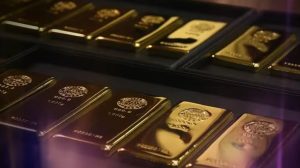
When it comes to retirement planning, individuals often seek diverse investment options to safeguard their financial future. One avenue that has gained prominence over the years is the use of self-directed Individual Retirement Accounts (IRAs) to invest in precious metals.
The question at hand is: Can you buy precious metals in a self-directed IRA?
The short answer is yes, but the intricacies of this investment approach warrant a closer examination.
Understanding Self-Directed IRAs:
Before delving into precious metal investments, it’s important to grasp the concept of a self-directed IRA. Unlike traditional IRAs, which limit investment choices to stocks, bonds, and mutual funds, a self-directed IRA offers a broader scope of investment opportunities, including real estate, private equity, cryptocurrencies, and precious metals.
This flexibility empowers investors to make choices aligned with their risk tolerance and financial goals.
The Precious Appeal of Precious Metals:
Precious metals, such as gold, silver, platinum, and palladium, have long been cherished as a store of value and a hedge against economic uncertainties. Their stability and potential to appreciate over time make them an attractive addition to a diversified investment portfolio, and self-directed IRAs open a door for individuals to include these metals in their retirement savings strategy.
Investing in Precious Metals via Self-Directed IRAs:
Investing in precious metals within a self-directed IRA is indeed possible, but the process involves certain rules and regulations to ensure compliance with tax laws and IRA regulations. Here’s how it generally works:
1. Choose a Self-Directed IRA Custodian: Self-directed IRAs necessitate a custodian or trustee to manage the account. This custodian must be experienced in handling non-traditional assets like precious metals. Investors must research and select a reputable custodian who can facilitate precious metal investments within an IRA framework.
2. Establish the Self-Directed IRA: Once a custodian is selected, an individual can open a self-directed IRA account. This account will serve as the vehicle for investing in precious metals.
3. Purchase Precious Metals: Investors can use their self-directed IRAs to purchase approved forms of precious metals, which are usually limited to bullion coins and bars meeting specific purity requirements. Collectible coins and certain types of metals might not be eligible for inclusion in an IRA.
4. Storage and Custodianship: Precious metals purchased through a self-directed IRA are not meant for personal possession. They must be stored by an IRS-approved depository or storage facility. The custodian will manage the details of storage and custodianship.
5. Compliance and Tax Considerations: While investing in precious metals through a self-directed IRA offers potential tax advantages, it’s essential to adhere to IRS rules. The custodian will ensure that transactions are executed in compliance with tax regulations, preventing potential penalties or disqualification of the IRA.
Pros and Cons:
Pros:
- Diversification: Precious metals add diversity to an investment portfolio, potentially reducing risk.
- Hedge Against Inflation: Precious metals historically retain value during inflationary periods.
- Tangible Asset: Unlike stocks or bonds, precious metals are tangible assets that can be held and seen.
- Potential for Growth: If the metals appreciate, investors can realize gains upon selling.
Cons:
- Limited Choices: Precious metal investments within an IRA are limited to approved forms, which might restrict an investor’s preferred choices.
- Custodial Fees: Self-directed IRAs often come with higher administrative fees due to the need for specialized custodians.
- Volatility: While precious metals can appreciate, they can also experience price volatility, affecting investment returns.
- Storage Costs: Storing metals in an approved facility incurs storage costs that can impact overall returns.
In Conclusion:
Investing in precious metals within a self-directed IRA can be an enticing prospect for those seeking to diversify their retirement portfolio and capitalize on the stability and potential appreciation of these assets. However, this approach requires careful consideration of the regulations, fees, and limitations associated with self-directed IRAs.
Consulting with financial advisors and specialists in the field can help individuals make informed decisions that align with their retirement goals and risk tolerance. As with any investment, due diligence and a comprehensive understanding of the options are crucial for success in the world of self-directed IRA precious metal investments.

